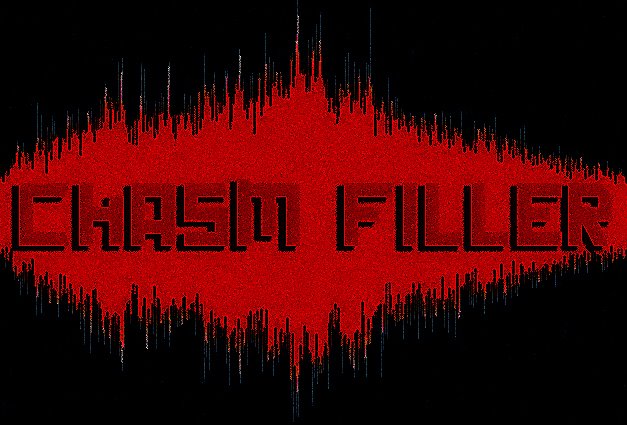
In this one Boredoms open your third eye and drive across it like a multicolored U-Boat with Kundalini Torpedoes.
"That’s why listening to Super Æ is such an incredibly fulfilling experience. Everything is placed right where it should be; the spurts of noise, the swells of distortion, even Eye’s wails are dead on every time. The Boredoms have always been proficient with their timing, but it was in a different way on their earlier records. It was about banging a drum in the right place to create maximum entertainment for the listener. Or letting go a monstrous riff after an extended silence for just the right sense of humorous contrast. With Super Æ, it’s something far grander; it’s about forming a masterpiece through unexpected turns, colossal dynamics, and masterful song development.
“Super You” opens the album with a barrier of feedback that screeches unbearably. About a minute into the song, the guitars launch in, beginning the album and predicting its magnitude with their tremendous force. Things build up for a few minutes as the feedback that commenced the track is manipulated and interposed in small portions over the guitars, but the song really hits its stride when, reaching the climax near the seven-minute mark, the noise drops out and a Can-influenced groove sets in. And here the album really begins. Here, we’re introduced to the new Boredoms. The more focused, more meticulous, more ambitious Boredoms.
“Super Are” is the album’s best example of their more focused song development, despite covering more territory than any other band could hope to comprehend. The laid-back, heavily Kraut Rock-influenced keyboards that open the track give way to tribal drums and chanting after a few minutes, and from there, two guitar chords dominate over Eye’s moans. It’s about five minutes in that we see why The Boredoms are just about the greatest band in the world, though, as the drums kick in and Eye lets loose the most fearsome howl imaginable before the song turns to chaos. It’s all done with such incredible precision, while at the same time inviting, no, demanding listeners to participate in fierce, out of control head banging, that it just seems unnatural.
“Super Going” may be the album’s highlight, defining why I love the Boredoms better than any other song of theirs. Despite its twelve-and-a-half-minute length, the song (or at least, the first two parts of the song) is constructed around only two chords. Played far apart, these two chords accompany Eye’s unintelligible vocals and a long, rotating list of sound effects. The song diminishes about a third of the way through, before reappearing at a much faster tempo and a much higher volume. From here, it continues in the same manner until about two-thirds of the way through the song, in one of the album’s defining moments. The drums pause and skip for a couple seconds, and something completely different emerges. The two chords are abandoned, and the Boredoms rock out to a new tune. After the eight-and-a-half minutes of sublime repetition, the Boredoms hit you with something altogether unexpected at just the right moment. It’s the most blissful thing imaginable.
“Super Coming” and “Super Are You” are the most traditional Boredoms tracks on the album. The former wells up in anticipation for a couple minutes, then attacks with the album’s most powerful, most unearthly onslaught of guitars. The band contributes inimitable vocals here; wild, caveman-like chanting that affirms the primordial, yet transcendental nature of the song. That the Boredoms keep this up for almost ten minutes seems nearly impossible, but sure enough, they do. Surprisingly, a calm, even relaxing outro finishes the song before it transitions into the sharp bleeps that commence “Super Are You”. The only song to feature the randomness of their earliest releases, the first few minutes of “Super Are You” recall their Pop Tatari material through vibrant keyboards, playful harmonics, chirping sound effects, unusual percussion, and most of all, vigorous screaming. When an extended vocal sample enters, however, the song takes a decidedly different turn, becoming very spacious and quite subdued. For the rest of the song’s duration, swirling keyboards gradually die and the vocal sample becomes increasingly lethargic.
“Super Shine” is what the Boredoms are building up to throughout the album. The chugging guitar riff and disturbingly high single note that intimidate the listeners at first give way to a simple melody, one that soon becomes the album’s peak. As the band donates backup chanting to a squealing guitar, the song rises to an unconquerable enormousness. The band takes several different approaches to the same melody throughout the song’s near 13-minute length, and each one carries the album even higher, even further away from any sense of reality. As the chanting hits the climax, the album reaches its full glory, and a sense of satiating completion overcomes the listener. Thankfully, we are given a beautiful respite with “Super Good”, the album’s closer (or epilogue, as I see it), and the song’s dreaminess allows us to meditate over the splendor that we have just witnessed.
It is a splendor that is unique to Super Æ, an album that succeeds in its amazing ambition more than any album since The Beatles. It’s almost pointless to say that Super Æ is a wonderful progression from the Boredoms’ previous releases, or an incredible achievement, or even a masterpiece; the album is as inspiring as art gets. The Boredoms did more than perfect their sound with Super Æ, they did more than create an entirely new sound with their old one, they did more than create a monumental album. They created a timeless piece of music. " - Kareem Stefan
Stalin organ

























